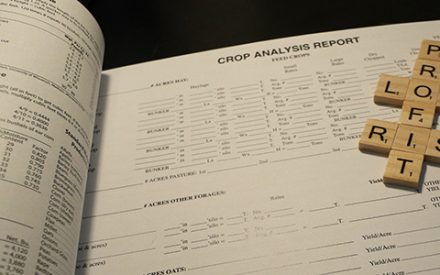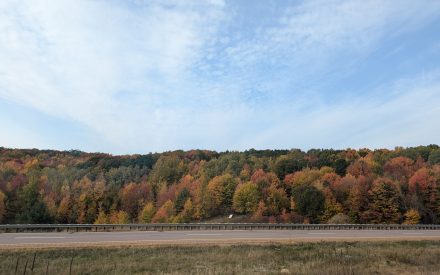Video Summary
In this Ag Weather Outlook, Assistant State Climatologist Dr. Ed Hopkins provides a detailed update on Wisconsin’s weather conditions as of May 22, 2025. He reviews recent severe weather events, including tornadoes and heavy rainfall, and their impact on soil moisture and crop planting. The presentation highlights regional differences in precipitation, with southern Wisconsin remaining relatively dry. Ed also discusses current soil moisture levels, planting progress, and soil temperatures, offering insights into how recent weather patterns may affect the early growing season for corn and soybeans.
Resources
- Wisconsin Ag Weather Outlooks
- Wisconsin State Climatology Office
- Crop Conditions & Soil Moisture Analytics (NASS)
- Runoff Risk Advisory Forecast (WI-DATCP)
- NWS Milwaukee Freeze Risk Tool
Transcript
0:05
All right, this is I’m Ed Hopkins.
0:09
I’m one of the assistant state climatologists because Bridgette and Steve Vavrus and Josh are all at some meeting for the for the central region or North Central region of the state climatology and down in Davenport.
0:27
Anyhow, so let’s go to the next slide very quickly.
0:33
Next slide or am I supposed to do it?
0:38
The slide is up on my screen.
0:40
Can you guys see it?
0:41
OK, All right, we have a few things.
0:47
Last a week ago we had quite warm conditions which then we’re right ahead of a weather system that produces severe weather across many areas of state.
1:03
And since at that particular point we had below average amount of precipitation and we got to change all of a sudden towards cooler conditions and wetter conditions.
1:22
Alright.
1:23
And another point we want to bring out is corn and soybean planting have been going on great guns due to the warm and dry conditions.
1:35
And as a quick outlook we’re going to be have a not a lot of precip especially over the Memorial Day weekend.
1:47
And OK, let’s go to the next slide.
1:50
OK.
1:53
As I said that last Thursday, there were at least 12 to 13 tornadoes that that hit up around Eau Claire and, and over in Clark County and then down from Sauk through Dodge County and and one of the biggest hits was by Mayville and Juneau and Dodge County.
2:24
Now I just want to make a comment that there was a lot of damage done, especially the farm and you know, you guys who may have had damage, you know, we’re going to have to or you’re going to have to go and, you know, document this.
2:41
Hopefully various things are going to be available for you for for low cost loans.
2:49
Next slide.
2:52
Alright, I said all right over the last week and Josh wanted me to show that we from back and on the 13th of May to the 20th of May, there was sporadic areas of precipitation all around the state.
3:19
The the blue areas, the higher amounts. And so there are a few places that isolated storm systems, OK.
3:34
But then all of a sudden in the last since the 20th, which was what Tuesday a couple days we had the area around Wisconsin, there’s a lot bigger area of precipitation because the weather system that was out to our east was, was funneling a lot of broad scale precipitation in the our area.
4:03
And so we have a band from from like Milwaukee, Ozaukee County up towards up north and west of of up towards Trempealeau County and such.
4:19
Over the last month we had some areas of precipitation and some of that was mainly in the late April from from the 20th of April to the beginning of May.
4:34
And there was some, you know, pretty good precipitation in some areas, specifically over in southwestern Wisconsin heading up towards northeastern Wisconsin.
4:48
And but then there’s other areas of the state that had less, especially down along the southern part of the of the state, south and east of the Madison area.
4:59
And this is, you know, it was one of those things, it was primarily thunderstorm driven and just another view over the last 30 days.
5:16
Take a look at the at the panel here on the right.
5:21
And this is the percentage of precipitation, the green, all the shades of green, those are precipitation amounts that were far above or above the 30 year normals.
5:39
Elsewhere, especially down in southeastern Wisconsin, it was fairly dry as indicated by the yellow and orange shading.
5:51
Continuing on to to to the 90 day from mid February on to just about a week or so ago, we had a similar type of a, of a pattern, a fair amount of precipitation in the northeast and central sections, dry in the south.
6:15
And that’s reflective in some other types of things too.
6:20
We’ll just continue on on that and I want to show a little bit because you know, we’re all interested in the amount of soil moisture, how much especially here in the beginning of the growing season because we’ve had dry conditions, especially across the south.
6:41
And and a one of the particular models we had multiple models for determining soil moisture.
6:48
One of them is the NASA got some of this information comes from satellite based the southeastern part of the of the state for the for the the the first 100 centimeters of of of soil depth, it’s fairly dry.
7:14
The percentage is really low as indicated by the dark red and orange shadings, especially across southern and eastern Wisconsin all the way up to Kewaunee County.
7:28
There’s an area where we started getting from the precipitation as indicated by the by the above average precipitation amounts across the central area of the state.
7:42
Marathon and some of the other counties, Wood and and Portage counties, especially next slide and the Climate Prediction Center has a what they call leaky bucket model where they do estimations and, and it also reflects drier than average conditions across or for soil moisture across the southern part of of of the state and extending down the southern into Northern Illinois.
8:24
We have a a program, not state climatology office, but but there’s a program that Chris Kucharik over in in the College of Ag and Life Sciences are run and this is Wisconet and and and it just shows the soil moisture sampling and for 4 inches, 8 inches and I’m losing I can’t see this.
8:55
We have the the green is is the most, the brown is the least.
9:05
Josh had put together looking at how between the 13th and the 20th last week, how much the soil moisture as indicated by the Wisconet, these automatic weather stations around the state, and the soil moisture has changed.
9:28
And the, the pinkish or, or that grat shading indicates that there’s been a decrease.
9:36
Not by much, but no, it’s, it’s there.
9:40
What’s going to happen?
9:42
And there’s a little bit of, of, of improvement up in Door County and Oneida County.
9:51
What’s going to happen in the next little bit?
9:53
Well, you know, we’ve had a fair amount of precipitation in the last week.
10:02
This is the hopefully be reflected in this change in soil moisture to a positive.
10:13
The NAS from the USDA shows that 70% of ag soils are considered to be adequate, both the topsoil and the subsoil and the the numbers in the in the brackets indicate the change from the previous week.
10:37
And it looks like we had much, much had not much change which we’re doing a little bit better than our neighbors in Minnesota, Iowa and Illinois.
10:48
OK.
10:52
Now turning the soil temperatures from the Wisconet network, we see and this is back at the near the last Tuesday or this past Tuesday that the except for at the 4 inch soil depth, we have temperatures across many areas of the state with those greenish colored backgrounds.
11:19
It’s over 50°F, which you know is a temperature that like say for example corn could germinate in.
11:30
And we do have scattered areas up along the Lake Michigan shoreline running all the way up to the Door County peninsula and then some over and near the Twin Cities and up by Ashland where the temperatures are below.
11:52
Well, they’re about 47 48°.
Badger Crop Connect
Timely Crop Updates for Wisconsin
Second and fourth Thursdays 12:30 – 1:30 p.m.
Live via Zoom

 ▶ Fall 2025 Financial Assistance for Producers
▶ Fall 2025 Financial Assistance for Producers ▶ Fall 2025 Ag Policy Update
▶ Fall 2025 Ag Policy Update ▶ Fall 2025 Corn and Soybean Market Outlook
▶ Fall 2025 Corn and Soybean Market Outlook ▶ November 6 Ag Weather Outlook for Wisconsin
▶ November 6 Ag Weather Outlook for Wisconsin


